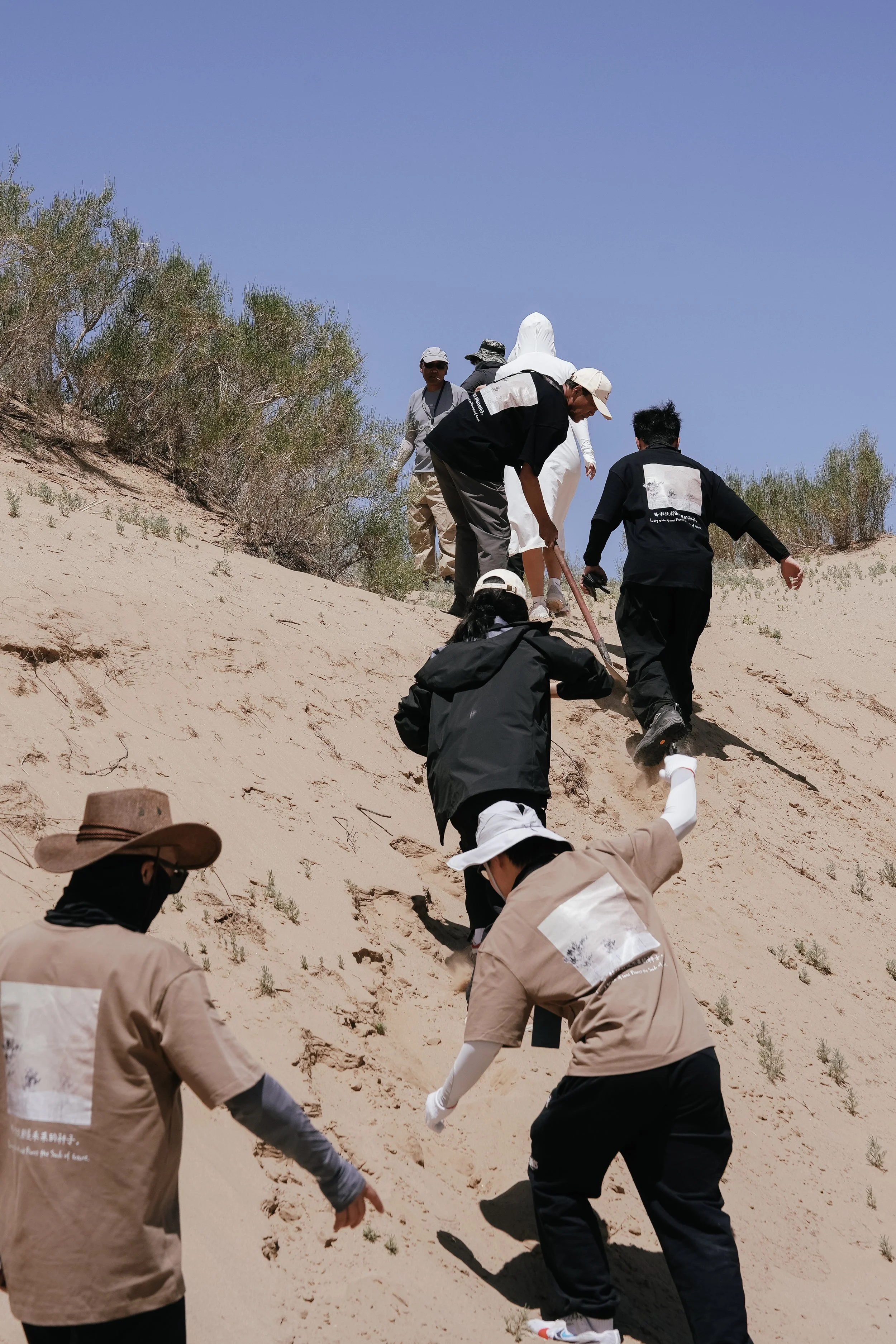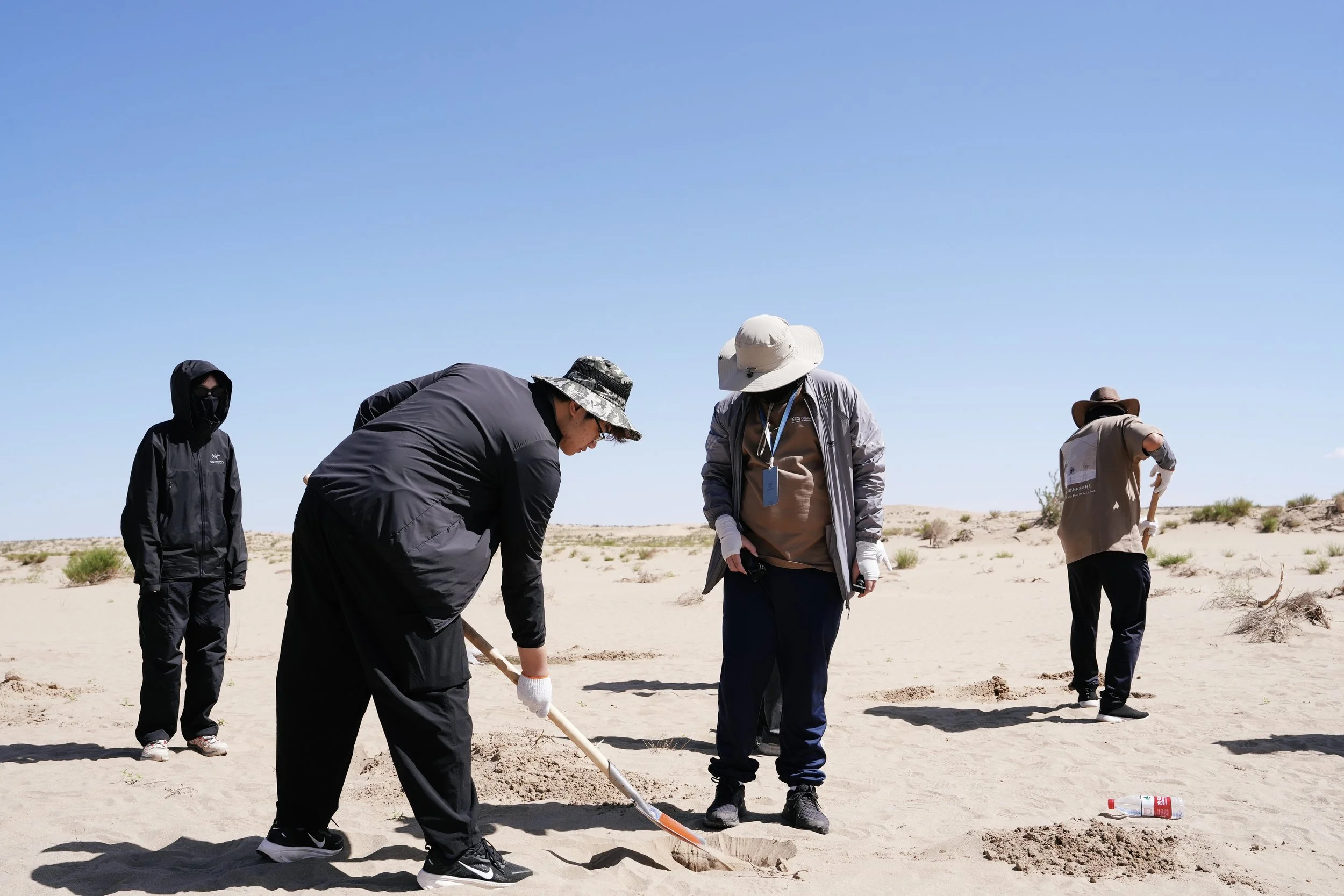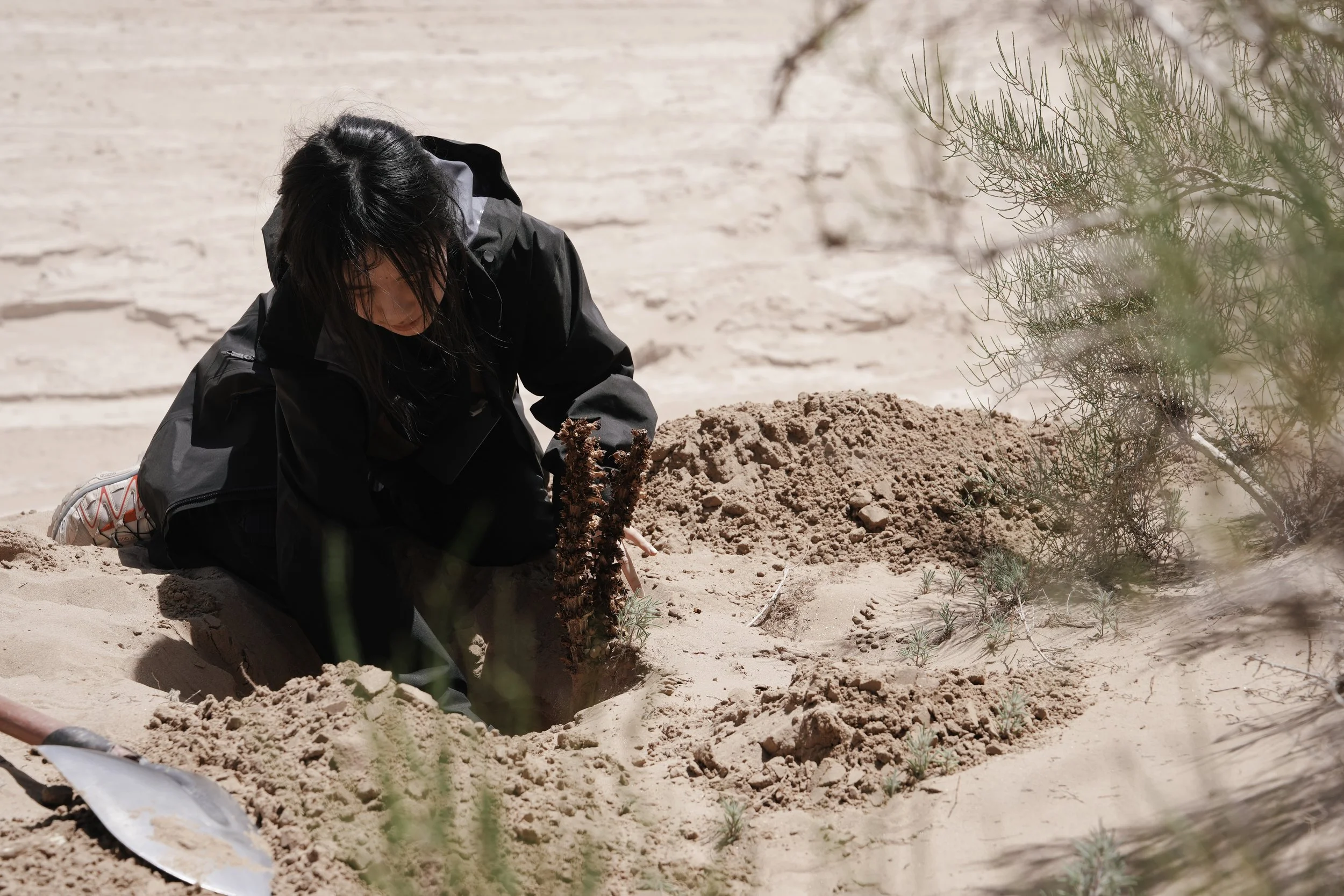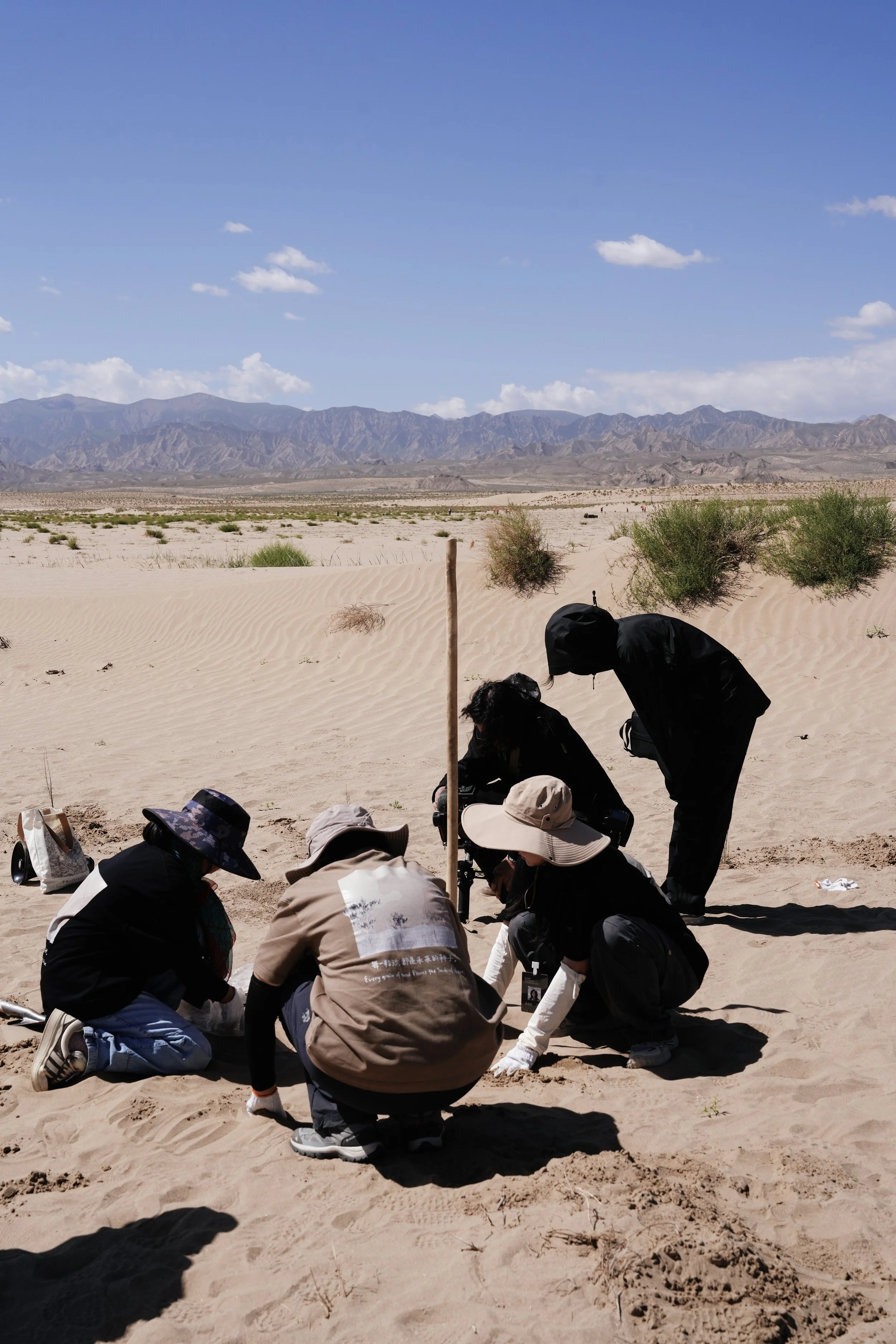Empowering the Next Generation: ResilienSEED’s Summer Research Program in the Desert
ResilienSEED launched an extraordinary research program that brought together students from three countries—China, Canada, and the UK—to explore the intersection of ecology, culture, and design in one of the most fragile ecosystems on Earth: the deserts of Qinghai.
A Global Team with Diverse Perspectives
Out of more than 50 applicants, we selected 6 students with backgrounds as diverse as their home countries. From astrophysics to mechanical engineering, graphic design to game design, film to ecology, their expertise reflects the interdisciplinary approach needed to address today’s environmental challenges. Age range from 12 to 21 years old. We also welcomed a volunteer from Mongolia, adding an authentic perspective on nomadic culture and desert resilience.
Site Visit to Dulan County
Our journey began in Dulan County, where students experienced the realities of desertification firsthand. At the Dulan Medicinal Plant Base (都兰药植基地), they learned about the ecological and economic importance of species like Saxaul trees and Cistanche—a rare medicinal plant that grows parasitically on Saxaul roots.
Hands-On Restoration: Planting Saxaul Trees
Each student planted five Saxaul trees, guided by local experts and our team. We taught them the proper techniques for digging planting pits, stabilizing root systems, and watering in sandy soils—skills essential for ensuring survival in this harsh environment.
In the first image, you can see the group lined up after completing the planting work, with the desert dotted by newly planted saplings.
The second photo captures the energy of the team climbing sand dunes to reach restoration sites, tools in hand, ready to make a difference.
Harvesting Cistanche
Alongside tree planting, students participated in Cistanche harvesting, a rare experience that revealed the intricate relationship between ecology and local livelihoods. They saw how this medicinal plant depends on Saxaul health and why sustainable harvesting practices are vital for balancing economic needs and ecosystem recovery.
Beyond the Field: Learning and Storytelling
Our program wasn’t just about physical work—it was about research, creative thinking, and storytelling. Students documented their experience through photography, film, and design concepts, contributing to a growing dialogue on adaptive architecture, climate action, and community engagement.
Through this immersive program, students didn’t just learn, they became active participants in ecological restoration, understanding that small actions, like planting five trees, can ripple outward to shape a more resilient future.
This is only the beginning. As part of our mission, we are also filming a documentary on desert ecological restoration, featuring these incredible young changemakers and their journey.








